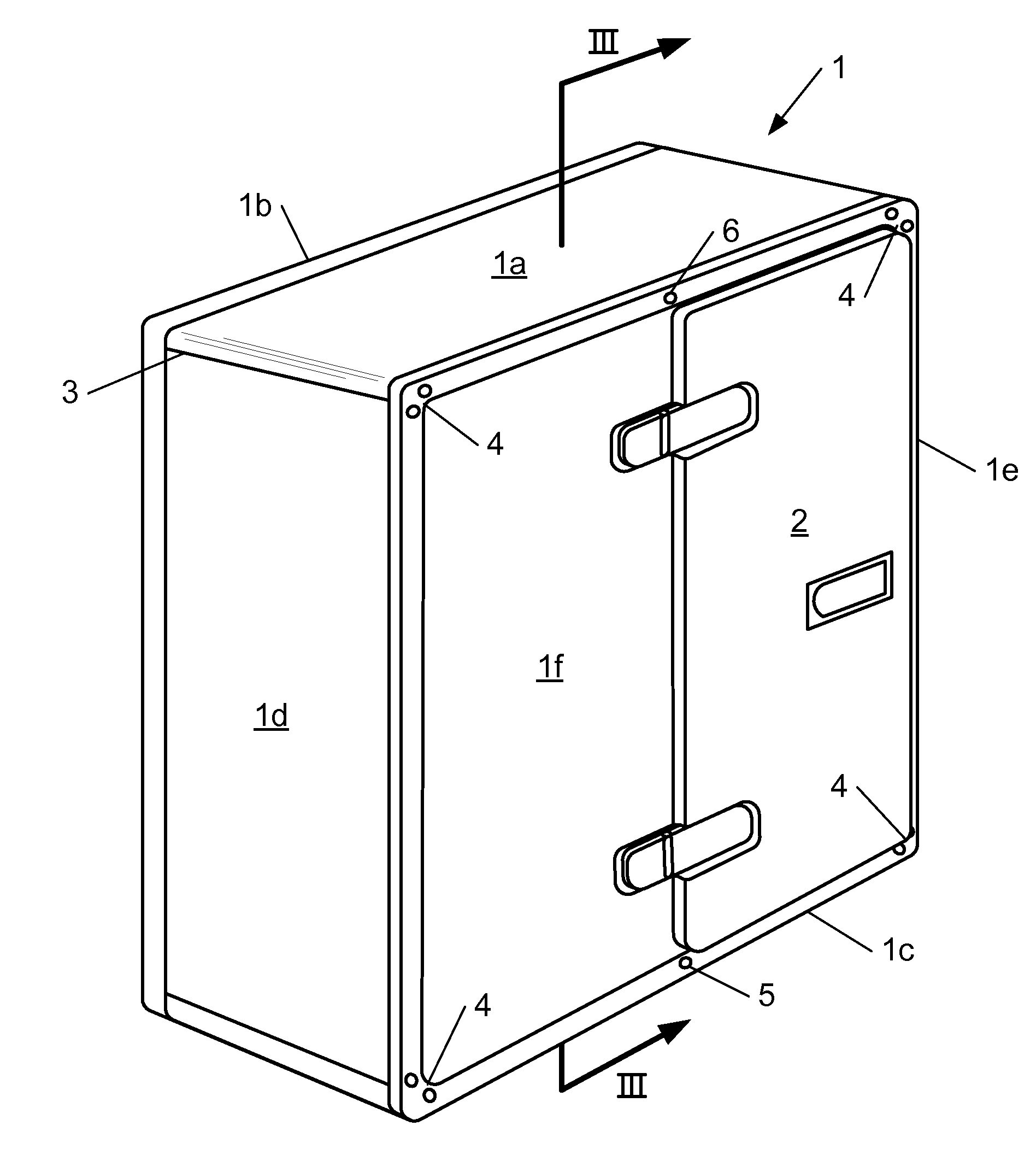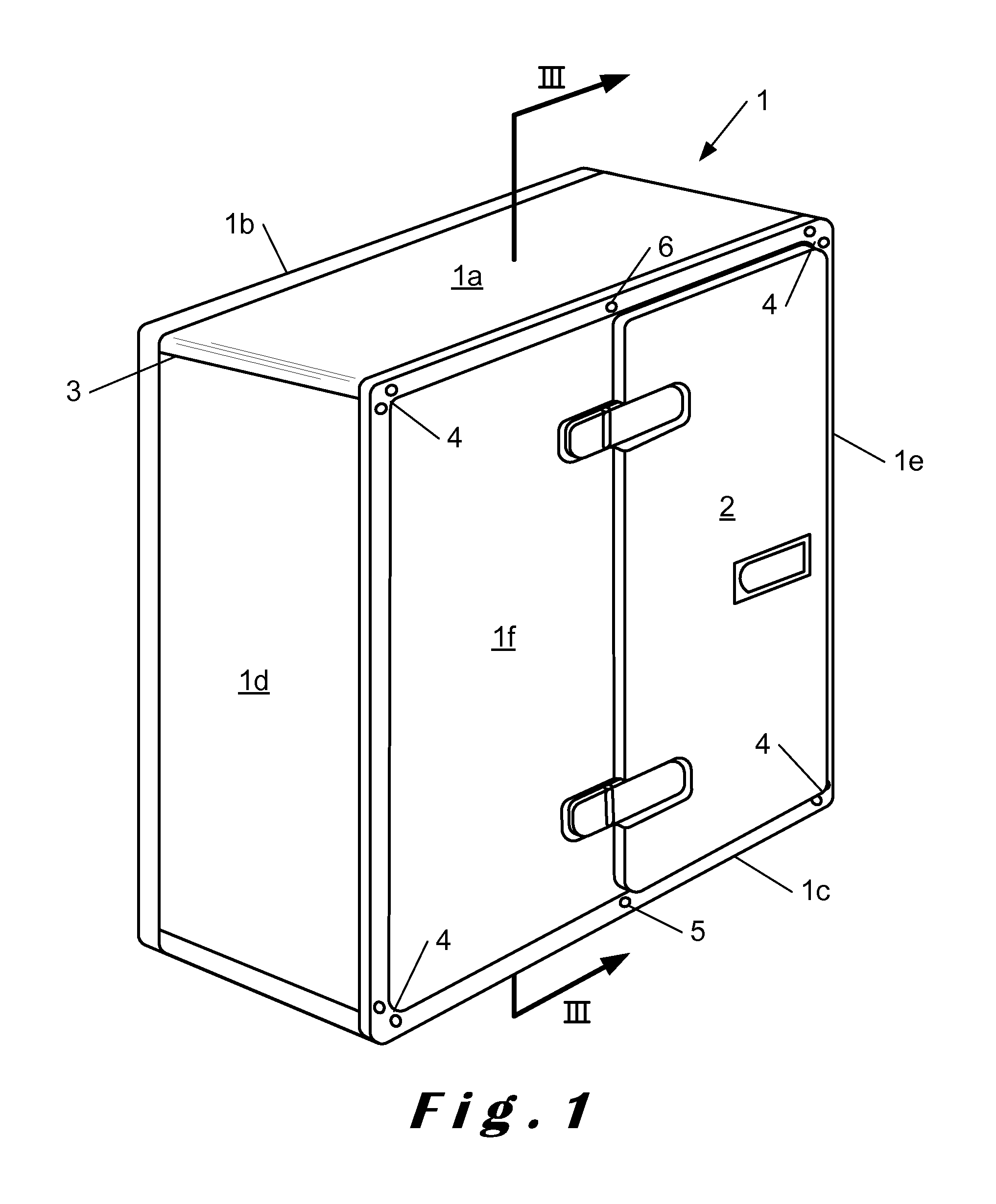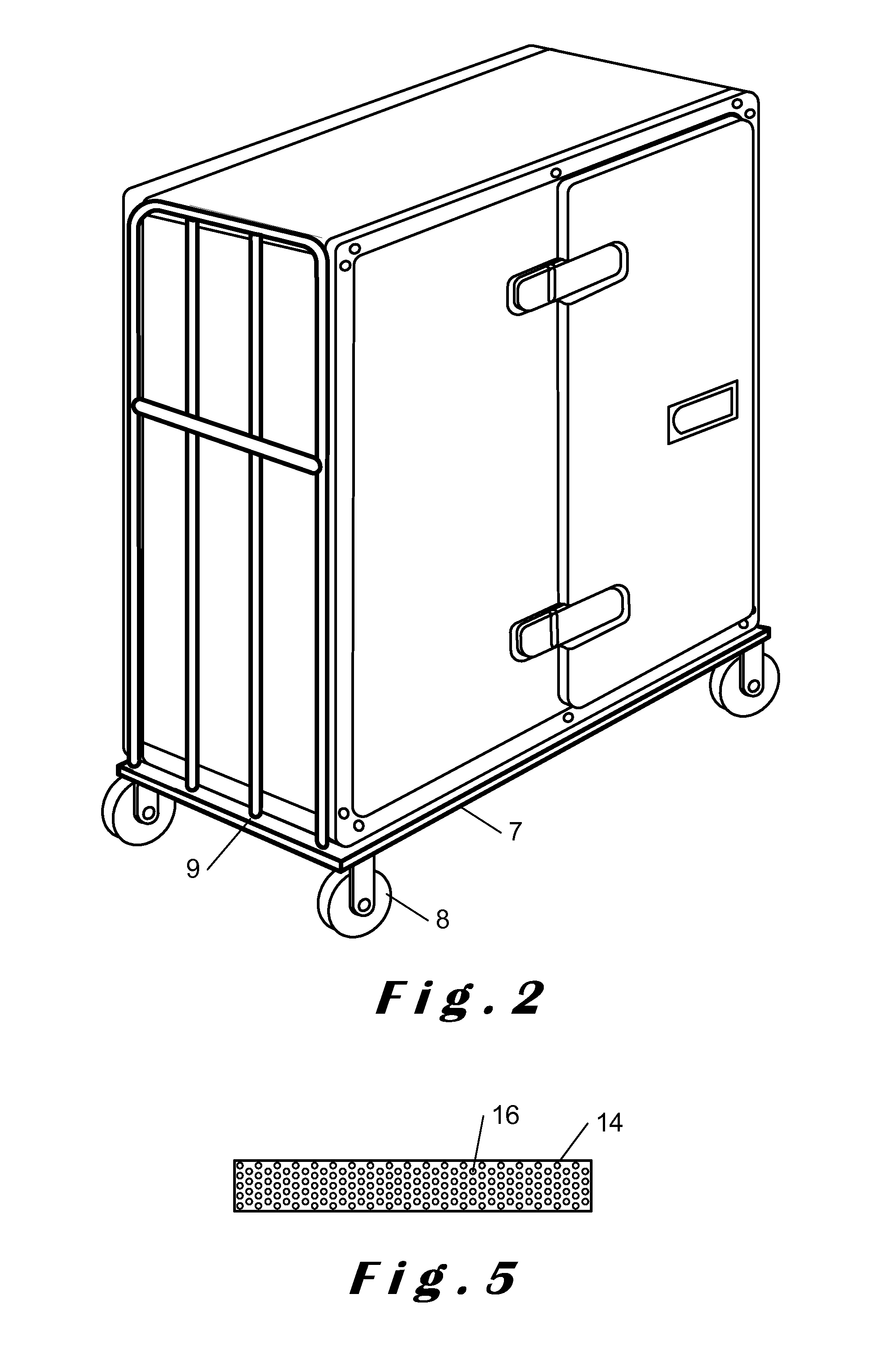Modular passive refrigeration container
a refrigeration container and module technology, applied in the field of modules, can solve the problems of inability to pump around or evaporate coolant, dependent on a source of energy, and inability to effectively move active refrigeration containers,
- Summary
- Abstract
- Description
- Claims
- Application Information
AI Technical Summary
Benefits of technology
Problems solved by technology
Method used
Image
Examples
first embodiment
[0028] three plate-shaped hollow cooling segments form a C-shaped cooling element, in which two plate-shaped cooling segments are arranged parallel to each other and connected by a third which extends perpendicularly between the plate-shaped cooling segments placed parallel to each other.
[0029]According to an alternative embodiment, the third plate-shaped cooling segment, which extends perpendicularly between the plate-shaped cooling segments placed parallel to each other, is divided into two separate hollow spaces which are not in fluid communication with each other. In an embodiment, in which the third plate-shaped cooling segment together with the first and second cooling segment forms a hollow space, a C-shaped cooling element arises with two L-shaped hollow compartments, each of which should be filled separately with coolant, in particular binary ice. In a preferred embodiment, this third cooling segment is a cooling segment, which is placed vertically in the refrigerated conta...
second embodiment
[0030] three plate-shaped hollow cooling segments form a cooling element, wherein each of the three plate-shaped hollow cooling segments are connected to each other on two sides with the edge of this side, or, in other words, with the three plate-shaped hollow cooling segments each perpendicular to each other.
[0031]According to a further embodiment, the cooling element comprises at least one further plate-shaped cooling segment which is connected to one or more of the edges with the at least three hollow plate-shaped cooling segments.
[0032]According to one embodiment, the further plate-shaped element is a hollow plate-shaped cooling segment which is connected with one or more of its edges with the other present hollow plate-shaped cooling segments together forming one hollow space. As a result, a cooling element is obtained which comprises four plate-shaped hollow cooling segments. According to one embodiment, said four hollow plate-shaped cooling segments form a □-shaped cooling el...
PUM
| Property | Measurement | Unit |
|---|---|---|
| Length | aaaaa | aaaaa |
Abstract
Description
Claims
Application Information
 Login to View More
Login to View More - R&D
- Intellectual Property
- Life Sciences
- Materials
- Tech Scout
- Unparalleled Data Quality
- Higher Quality Content
- 60% Fewer Hallucinations
Browse by: Latest US Patents, China's latest patents, Technical Efficacy Thesaurus, Application Domain, Technology Topic, Popular Technical Reports.
© 2025 PatSnap. All rights reserved.Legal|Privacy policy|Modern Slavery Act Transparency Statement|Sitemap|About US| Contact US: help@patsnap.com



